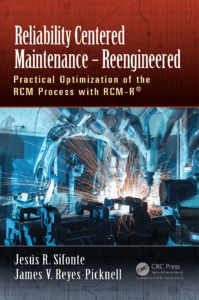 These are challenging economic times and opportunities abound with many of our customers to add new business value. They are turning to us and asking: “You’ve brought great value to our Reliability Centered Maintenance (RCM-R) program through knowledge capture, personnel education, laying the foundation for a ‘living’ maintenance program and so on. However, what additional value can you provide us beyond what you have already done?” One answer: “Focus on writing high-value, asset maintenance tasks. i.e. Tactical PM Program Implementations”.
These are challenging economic times and opportunities abound with many of our customers to add new business value. They are turning to us and asking: “You’ve brought great value to our Reliability Centered Maintenance (RCM-R) program through knowledge capture, personnel education, laying the foundation for a ‘living’ maintenance program and so on. However, what additional value can you provide us beyond what you have already done?” One answer: “Focus on writing high-value, asset maintenance tasks. i.e. Tactical PM Program Implementations”.
To elaborate, most of us would agree that there is a new global economy being forged right now in the manufacturing sector. Inevitably, this translates to a renewed focus on transferring more business value to the customer. Central to this will be the linking of RCM-R facilitation with effective maintenance program implementation.
Today we need a strong emphasis on what Tactics are required in order to achieve the failure management strategies an RCM-R analysis team defines. That is, we will conduct the decisions phase of the analysis somewhat differently. On a consensus basis, the Facilitator leads the RCM-R Team to create well-articulated PM tasks. Note that the process always considers each of the three possible types of proactive maintenance tasks (Condition-Based Maintenance – C Tasks, Scheduled Restoration/Discard – T Tasks, or Detective/Failure-Finding Interval – D Tasks) :
For C- Tasks, which can make up roughly 25% of our RCM-R outcomes, we need physical asset health Indicators and those can present us with one of several states in which our inspections may find them:
- Normal state (a description of asset status where there is little or no degradation in performance),
- Warning state (a description of asset status where there is some degradation in performance but perhaps insufficient to warrant an intervention),
- Alarm state (a description of asset status where there is sufficient degradation in performance to warrant an intervention either immediately OR at the next available downturn) and,
- Critical state (a description of asset status where there is significant degradation in performance to warrant an immediate intervention).
These we will refer to as the NWAC states.
We also need to articulate, with a brief description (i.e. 20 to 30 words) the action to be triggered for those NWAC states and what must be done to return the asset to like-new condition.
Here’s an example of this for a C-Task (CBM):
Visually inspect the condition of the hydraulic hose for signs of blistering, cracks, leakage or other physical damage. When visible cracks are found, Maintenance Mechanic replaces hose H1004.b as per SOP #MT501-1(a) at next available downturn. Repair time = 30 mins. Spare hose (SAE 100R2 Type AT) needed.
N – Normal (Not brittle, not blistered, not cracked, not leaking – no action)
W – Warning (Brittle, blistered – Continue to monitor hose condition)
A – Alarm (Cracks found – schedule hose replacement at next available downturn)
C – Critical (Leaks found – contact Maintenance for immediate hose replacement) – this would actually show up as the failure mode in our RCM-R analysis. Every failure mode actually has a corrective task that should be associated with it, even if we use preventive and predictive maintenance. Those reduce the risks of failure occurring, but cannot completely eliminate it.
If done correctly, the effort/time required describing each NWAC state and the actions (tasks) required 2 is quite small. We are capturing the NWAC information when we describe the P to F (or life) ‘evidence’ that leads us to conclude that a functional failure is in progress. The failure effects should describe this degrading state. Provided that our analysis team has members who are reasonably familiar with the assets being analyzed, they will be able to quickly & easily assign each NWAC from their experience and knowledge. The corrective tasks should be easy to describe because seasoned maintainers have often experienced the failure in question and had to repair it. They are usually more than willing to share their experiences so they need not be repeated.
As RCM-R Facilitators, we conduct our analyses with maintenance program implementation clearly being our end objective. After all, the complete business value proposition (i.e. the promise of RCM-R) can only be realized if, after the analysis is done and team goes back to their normal jobs, the agreed-to Proactive tasks become part of the maintenance program executed through your work management process.
See our online RCM-R training offerings.
_____________________________________
This article was originally provided by Carlo Odoardi in 2015 and was edited for re-publication today. Carlo is a Maintenance & Reliability professional with a passion for helping asset-intensive companies achieve sustainable, world-class operational performance. Before moving on to other work, he consulted extensively on industrial culture change, business transformation, advanced industrial technologies, and Management Information Systems.

